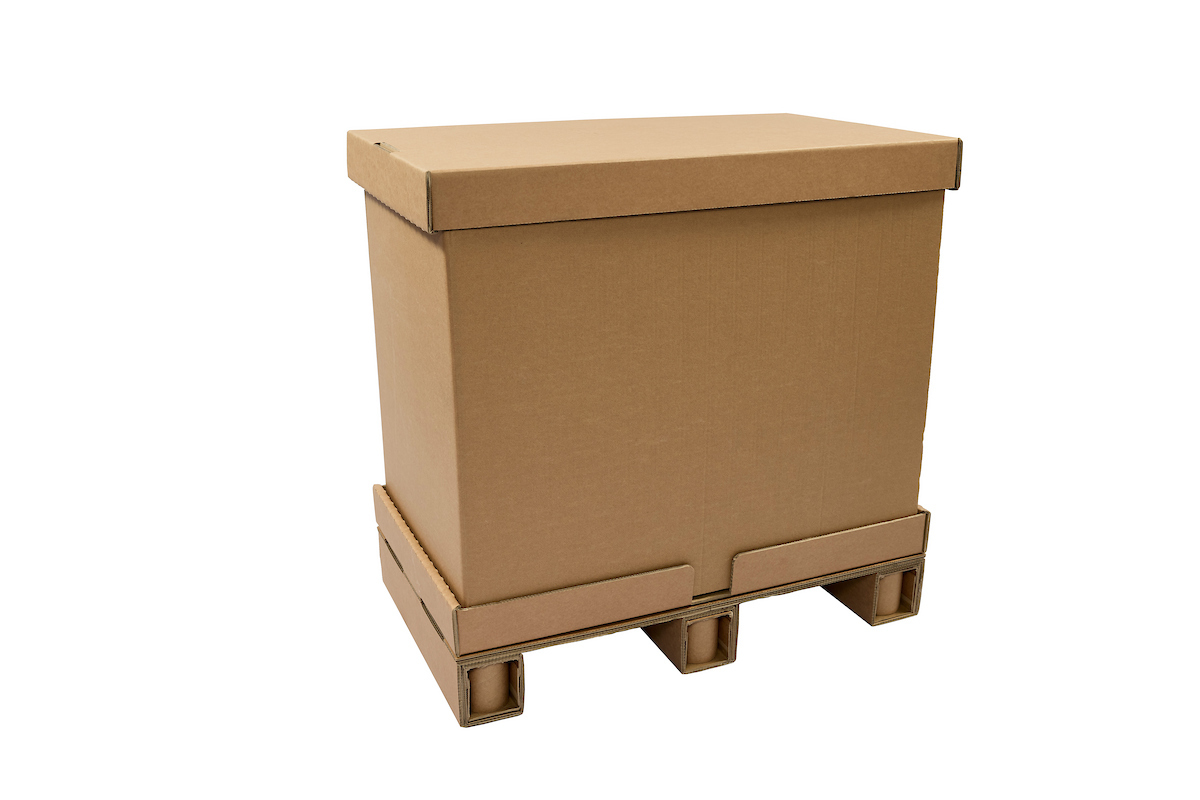Corrugated and corporate sustainability goals


Packaging plays a pivotal role in advancing corporate sustainability goals by influencing resource efficiency, waste reduction, and environmental stewardship. Thoughtfully designed packaging can minimise raw material usage, favour renewable or recycled resources, and optimise logistics, thereby reducing a company’s carbon footprint. These are just a few reasons why corrugated is the perfect material to help businesses achieve their sustainability goals.
Sustainable packaging, such as corrugated, demonstrates a company’s commitment to transparency and innovation, enhancing brand reputation among increasingly eco-conscious consumers.
It also contributes to compliance with evolving regulations and standards, mitigating risks related to environmental impact. By considering the packaging they use and taking positive steps to remove hard to recycle materials from their packaging supplies, businesses can take large steps towards achieving or elevating their sustainability goals.
From supply chain solutions to high end packaging solutions, corrugated is an adaptable packaging material that offers a versatility not available with other materials.
With so many board grades available, professionals available to create a massive range of different solutions responsible businesses who value sustainable packaging solutions in their value chain would be remiss to not explore the benefits corrugated can bring them or indeed explore how a new packaging partner could re-evaluate their current corrugated solutions and make improvements.
Whether the goals are part of an ESG policy, or legislative requirements through EPR or similar, businesses can make wise packaging decisions that can help achieve those goals.
By recognising that packaging is far more than a functional necessity a business can ensure packaging is integrated into its sustainability policies.
The right packaging can help businesses use their resources more efficiently, reduce waste and be a champion for environmental stewardship. The choices made in packaging ripple across supply chains and resonate with environmentally aware consumers, making it a central factor in any credible corporate sustainability strategy.
One way packaging supports sustainability goals is through efficient and effective design, which can use raw materials in a considered way bringing environmental and production protection in equal measure. It can also help reduce costs associated with production, packing and logistics.
Material selection is critical. Sustainable options such as corrugated board offer several advantages over less environmentally friendly alternatives.
The board is manufactured from at least 75% recycled material and virgin fibres are sourced from ethically managed forests. It is also 100% recyclable so after its primary use it can be recycled or repurposed. Because it is so easy to recycle as well, through both domestic and commercial channels, businesses are more reassured that their packaging choices won’t contribute to landfill or pollution and instead become part of an ongoing value chain.
Because there are so many board grades and print options available, packaging solutions can be tailored to deliver both protection and presentation without compromising on sustainability. Collaborating with a professional packaging partner such as Boxes and Packaging and the wider Logson Group, companies can work together to unlock innovative solutions and improvement to existing packaging strategies.
Modern businesses must contend with evolving regulatory frameworks—such as Extended Producer Responsibility (EPR) legislation—which require companies to account for the environmental impact of their packaging. Meeting or exceeding these requirements is not only a matter of compliance but a proactive way to mitigate future risks. Additionally, sustainable packaging demonstrates a commitment to transparency and innovation, building trust and enhancing reputation amongst eco-conscious consumers.
Sustainability goals often arise from a company’s ESG (Environmental, Social, and Governance) policy, or from compliance with legislative demands such as Extended Producer Responsibility (EPR).
Whatever the driver, it is worth recognising that packaging is a powerful tool for businesses committed to meeting sustainability goals and corrugated is by far one of the best choices in terms of raw material.
By embracing innovative, versatile, and circular materials like corrugated, and by continuously re-evaluating their packaging choices in the context of evolving regulations and consumer expectations, companies can make meaningful progress towards a more sustainable future—for themselves, their customers, and for the planet.